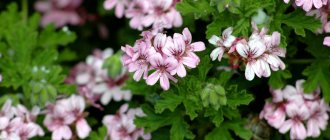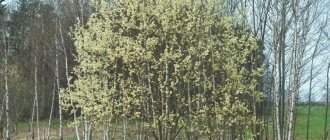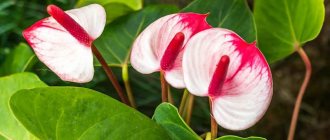The pomegranate, or pomegranate tree (Punica), has long been considered a symbol of fertility, because under the hard red skin of this berry there are hundreds of small juicy grains with a seed inside.
Yes, pomegranate is a berry. It's just very big. Pomegranate
Pomegranate is a southern plant; it loves warmth and ripens in warm regions by mid-autumn, if not later. Today there are also frost-resistant and early-ripening varieties, but growing a pomegranate tree in the middle zone in open ground is an activity for extreme sports enthusiasts. However, there are also such people in Russia.
Depending on the type and variety, as well as the region in which it was grown, pomegranate berries can be sour or sweet.
Depending on the variety and type, pomegranate berries can be sour or sweet
Pomegranates grown in Turkmenistan, Azerbaijan (near the Talysh Mountains and Nachikhevan), and Central Asia usually have a sweet taste
Sour - Karabakh and Ganja (West Azerbaijan) pomegranates. Georgian ones can also be recognized by their sour taste and pink flesh with white, slightly pinkish grains.
Ripe pomegranate fruits
Pomegranate belongs to the Derbennikov family. It is a deciduous shrub or small tree up to 6 m high. Its branches are thin and have thorns.
Pomegranate has 2 main types of flowers: those that form an ovary (in the shape of a jug), and those that do not form fruit (in the shape of a bell). Infertiles can also be distinguished by their small size and short pistil. They fall off quickly. There are also flowers of intermediate forms. The color of the flowers is orange-red.
Blooming pomegranate
Pomegranate tolerates drought well and can withstand short-term drops in temperature to -17 ° C, but at the same time its shoots on which fruits (pomegranates) are formed suffer. Therefore, it is grown mainly in the south.
Now there is a lot of debate about the possibility of growing pomegranate in central Russia. With good shelter, it can, of course, live for more than one winter, but whether it will ever bloom in your area is a big question. Below is a photo of a pomegranate planted in the garden at the age of two from a pot. It winters in the Moscow region for more than one winter in a row, but has never bloomed.
Pomegranate in the Krasnogorsk region (Moscow region). Photo from the site forum.homecitrus.ru However, the craftsman from Shebekino V. M. Evdokimov overcame these difficulties and successfully grows pomegranates in open ground, producing fruits weighing up to 550 g.
Ads by
What is a pomegranate tree: the meaning of the name
Pomegranate is a fruiting shrub or tree.
Its generic name comes from the Latin word "punicus", meaning Punic. The specific name comes from the word “granatus” , which translates as granular, due to the many juicy grains inside the fruit.
In the Middle Ages, the pomegranate was called the seed apple (Pomum granatum). The ancient Romans gave it the name granular apple (malum granatum). This fruit is called an apple in different languages: Italians – melograno, Germans – Granatapfel.
In the old days, the pomegranate was called the royal fruit, because of the shape of its upper part , which resembles a crown, as well as for its healing properties, which can help in the treatment of certain diseases.
The Greeks called the pomegranate the “fruit of happiness.” They had the custom of throwing these fruits at the feet of newlyweds so that their family would be rich and abundant, just as it is filled with sweet pomegranate seeds.
Appearance
Many people know that pomegranates grow on trees. However, a plant, even an adult, does not always look exactly like the tree familiar to most of our compatriots. Quite often it looks more like a large bush.
Most often the height is 2-2.5 meters. But in some cases, especially in wild pomegranate trees, the height can reach 3-4 meters or even more! And what flowers he has! A person who has seen in person how a pomegranate blooms and grows will certainly never forget this magnificent sight.
And yet, first of all, many are interested in the fruits, and not in external beauty and aesthetics. Pomegranates are quite large - in some varieties, with good care, their diameter can reach 15-17 centimeters, and their weight exceeds a kilogram.
The fruits are covered with a fairly hard skin, under which are hidden seeds with an appetizing juicy shell. Due to their resemblance to precious stones, the latter received the name garnet. The number of seeds in large fruits can exceed a thousand. True, their germination rate, especially if we talk about store-bought fruits, is relatively low.
History of selection and appearance of pomegranate
Mention of the pomegranate is present in Ancient Greek mythology. In these works, the fruit was presented both as a symbol of abundance and immortality, and as a sign of oblivion and death. Since ancient times, this fruit crop has been found throughout the Mediterranean coast.
Residents of Ancient Greece were sure that the pomegranate fruit was created from the blood of Dionysus, the god of wine. For Christians, the pomegranate fruit was a symbol of resurrection and was associated with the image of the Virgin Mary. Many ancient paintings depict the Virgin Mary and the baby Jesus holding a magical fruit in their hands. After research, scientists suggested that the birthplace of the pomegranate tree could be Persia (Iran).
Today the plant is widespread in the Caucasus, Asia, Iran, Afghanistan, Central Asia and other countries with tropical and subtropical climates, as well as throughout the Mediterranean. The plant was brought to Crimea by the Greeks.
Seed sowing technology
How to grow a pomegranate tree? You need to plant a seed. To do this, a pot, preferably a clay pot, is filled with a substrate that includes soil, sand and peat. It is important that the soil is loose. Expanded clay, fine gravel or other material is poured onto the bottom of the pot as drainage. We should not forget that excess moisture has a detrimental effect on the root system of the pomegranate tree. The technology for planting grains is as follows:
- You need to make small depressions on the surface of the soil in the pot.
- Place the seeds in them: one grain in each hole.
- Cover the holes with soil, but at different levels, without deepening the seeds into the soil more than a centimeter. There should be a distance of about two to three centimeters between the grains. If it is not maintained, then due to the planting density the seeds will not germinate well.
- Water the seedlings.
- Cover the crops with film.
Botanical characteristics, description and photo
This plant belongs to the dicotyledonous class, the loosestrife family, the pomegranate subfamily, the genus pomegranate.
Bush or tree?
The pomegranate may look like a tree with a branched crown, but is more often found in shrub form. A deciduous plant growing to a height of 5-6 m . The lifespan of a pomegranate can reach up to 100 years.
What does the plant look like?
The pomegranate root system is superficial, well branched, growing in all directions.
The plant is not picky about soil, but feels better on organic-rich, loamy, permeable soils. Its branches are thin, but despite this they can bear heavy fruits. At the end of one-year-old shoots there are thorns. The leaves are small, smooth, glossy, have an elongated oval shape, and are collected in small bunches.
Flowers
The flowers are funnel-shaped, the flower size is from 2.5 cm . Pomegranate flowers can be pitcher-shaped, bisexual, with a pistil and anthers, on which fruits are then formed. There are also bell-shaped flowers - these are barren flowers that do not have ovaries. There are also flowers of intermediate forms. The calyx of the flower consists of 5-7 fleshy triangular parts, leathery. The stamens and petals are attached to the calyx itself.
From the large buds that appear on the current year's growths, delicate flowers of rich colors bloom: scarlet, pink, purple, white, pale yellow, red with a white border, both simple and double, but not emitting a fragrance.
Pomegranate blossoms are abundant and long-lasting, beginning in May and ending in August. There are 3 stages of pomegranate flowering.
The first buds to bloom are from overwintered buds that were formed last year. It is from these flowers that the largest and most delicious fruits are formed.
The second wave of flowering begins when the buds of overwintered buds open, but are not fully formed.
The third phase of pomegranate flowering is buds from the buds of new growth. And from these flowers small fruits are obtained, which sometimes do not have time to ripen.
The pomegranate tree produces its first harvest in 3-4 years of life , and full fruiting occurs in 7-8 years after planting. The fruits ripen in September-November. In the month of August, flowers and fruits can be located on one tree at the same time. From one mature tree you can get up to 50-60 kg of harvest.
You will learn more about pomegranate flowering in this article.
Fruit
The fruit of the pomegranate tree is called pomegranate, a name that refers to this genus of plants. From a botanical point of view, the fruit is a false berry surrounded by a hard peel. The fruit is spherical in shape, with a stalk on one side and a crown-like corolla on the opposite side.
The fruit is covered with a rough, inedible skin of red-brown or dark red color , under which hidden seeds (seeds) covered with juicy pulp. But many modern varieties have been bred with light pink skin, as well as with small touches. Inside, the pomegranate fruit is divided into 9-12 chambers (nests), between which there is a white film. Each chamber has 2 tiers of grains.
Pomegranate seeds taste sweet, sweet and sour, and sour, depending on the variety. The juicy part of the seeds makes up up to 50% of the total weight of the fruit. The fruits of some varieties can grow up to 12-15 cm in diameter and weigh from 300 to 600 g. Inside one fruit there can be up to 1000 seeds.
You can find a description of pomegranate fruits in this article.
This is what a pomegranate tree looks like:
Plant care
First of all, you need to remember about regular watering. If it does not rain at least once a week, then it is necessary to compensate for the lack of moisture. But the main thing here is to be moderate - pomegranate does not like excess moisture. This may well lead to root rot. And this often causes weakening or even death of the plant.
Don’t forget to renew the mulch every season - the old one can be sent to the compost bin. Mulching, according to many experts, is a very important assistant when growing pomegranates. Its advantages have already been discussed above.
Don't forget about applying fertilizers. In June, it is advisable to use organic fertilizers - anything from green slurry to compost.
But in the middle or end of August you can use potassium and phosphorus fertilizers. Thanks to phosphorus, the root system is strengthened, which allows the plant to easily survive the frosty winter - of course, not without additional help from the owner. And potassium is needed for the abundant formation of buds. It’s worth talking about this in more detail.
Existing varieties and their differences
The largest collection of varieties is collected in the Kara-Kala Nature Reserve in Turkmenistan - 800 different species and forms. In the Nikitsky Botanical Garden in Crimea there is a collection of 350 different varieties.
All varieties of this plant are divided into two varieties. The first has hard, hard seeds, and such pomegranates are found in any southern region. They are unpretentious to soils and environmental conditions. The second variety is fruit-bearing shrubs with fruits whose seeds are soft. This culture is capricious and will not grow in unsuitable conditions. These varieties require a certain soil, humidity level and ambient temperature.
Popular varieties of pomegranate are:
- Baby is the smallest variety;
- Dwarf Carthage is a miniature tree, ideal for planting in the garden;
- Akhmar is an Iranian variety with very sweet fruits;
- Nar-Shirin is a fruit with sweet grains of an almost perfect round shape and a soft pink color;
- Dholka - pale pink fruits with light, almost white grains, grows in India;
- Sweet Mangulati is a slightly sour fruit that grows in Israel; oil is made from the seeds of this variety;
- Achik-anor – berries with a sweet and sour tart taste;
- Ak-don - its skin is yellow-pink with reddish spots;
- Gyuleysha pink and Gyuleysha red are varieties of Azerbaijani selection;
- Bala-mursal is an Azerbaijani variety that is comparable to the Iranian Akhmar.
In the Caucasus and Crimea, the most common varieties of pomegranate are Gyuleysha red and pink, as well as the sweet variety Veles.
The types and varieties of pomegranate are described in detail here.
Trimming homemade pomegranate
When growing a pomegranate tree at home, the top layer of soil is renewed annually and the plant is pruned. To form a stable crown, the top of young shoots is pinched when they grow to a height of 60 cm. Usually, during pruning, a low tree is formed, in which there are up to five skeletal branches. This process is carried out until the buds bloom. How to prune a pomegranate tree? To do this, you need to get rid of all weak, diseased, damaged branches and sprouts that prevent the fruit from growing. This promotes crown thinning. Once every five years, old branches are completely cut out.
Growing rules
Growing pomegranate in different conditions is described below.
On the street
As a fruiting plant, pomegranate
is grown throughout the world in tropical and subtropical regions .
It is cultivated in the countries of the Middle East, Afghanistan, Iran, Spain, Greece, Portugal, Italy, the Caucasus, Central Asia (Uzbekistan, Turkmenistan, Tajikistan), France.
In Russia, pomegranate is grown in Crimea, South Ossetia, southern Dagestan, and the North Caucasus.
It has been grown in Central Asian countries since ancient times . Harvest here from mid-September to mid-October. With the onset of cold weather, the plant is bent to the ground so as not to freeze and covered with straw.
Many different varieties are grown in Transcaucasia. The harvest is harvested in October. In the coastal subtropical zone, the pomegranate tree overwinters without shelter. In foothill areas, the plant is bent to the ground and covered.
In Russia, pomegranate is able to grow and bear fruit only in the subtropics of Crimea and the Krasnodar Territory. Here the plant blooms in May and the harvest is harvested in October. In the central zone of the Russian Federation, pomegranate can only be grown at home or in greenhouses.
In order for the plant to grow and bear fruit, it must be properly cared for, following agricultural practices.:
- mandatory mulching of the ground under the plant;
- The plant should be watered moderately;
- periodically feed with mineral and organic fertilizers;
- give the plant timely pruning and correctly form the crown;
- protect the roots and above-ground parts of the plant from temperature changes;
- carry out preventive treatment of pomegranate against parasites and diseases.
Read about growing pomegranate in open ground here.
In the house and apartment
At home you can grow dwarf varieties .
Miniature fragile trees grow no higher than 1 m in height. Their leaves are small, in good light and in a warm room they may not fall off in the fall and remain all year round.
If the room is cool, the plant may lose its leaves . If this happens, then the pomegranate is removed to a cooler place and practically not watered.
In March-April, the plant wakes up and is placed on a sunny windowsill. First the leaves bloom, and then the first flowers appear. In summer, it is useful to place indoor pomegranate outside: in the garden or on the balcony. The fruits of this pomegranate grow no more than 2-3 cm in diameter. They are edible, but more often they are kept on the tree for beauty.
Read how to grow pomegranate at home here.
From the seeds
You can grow pomegranate from a seed. To do this, you need to remove several grains from the ripe fruit for planting , remove the pulp from them, and rinse them under running water. The bones should be hard and ivory in color.
Prepared seeds are planted in containers with moist soil to a depth of 1.5 cm and covered with polyethylene, which is periodically opened to sprinkle the surface of the soil with water. After 2-3 weeks, the seeds germinate. The most favorable time for sowing is November or early spring.
Read more about growing pomegranate from seeds in this article.
Preparing for planting on the site
Experienced gardeners know that pomegranate is a rather fastidious crop. Therefore, the soil must meet certain requirements.
First, dig a hole in a suitable place (protected from drafts and well-lit). Its dimensions should be quite large - approximately 60 x 60 x 60 centimeters. If the soil on the site contains clay, that is, it is heavy, it would be useful to mix it with sand, adding from one-fourth to one-third of the volume. Conversely, if the soil is sandy, it makes sense to dilute it with good chernozem or even high-quality humus.
After this, you can plant the seedling or shoot. It is desirable that it is not perpendicular to the ground, but at an angle of about 45 degrees. Yes, it looks very unusual. But the wind, which causes a lot of trouble for gardeners in many regions of our country, will rattle the tall tree less. And it is much easier to protect a tilted tree from the cold in winter than an upright one.
When planting is completed, the soil needs to be watered generously and compacted a little so that there are no voids that could cause problems later. It would be a good idea to mulch the ground around - use dry manure, straw, sawdust or pine needles for this. This will reduce the number of weeds around, slow down the evaporation of moisture and ensure heat accumulation.
This completes the landing. But in order to get a harvest and preserve the young tree, it is necessary to provide it with appropriate care.
Benefits and harms
Pomegranate has many beneficial properties, including
- antioxidant, thanks to a large number of vitamins and minerals;
- anti-inflammatory;
- lowering blood pressure;
- improving blood quality;
- antibacterial and antifungal properties help fight disease;
- strengthens blood vessels and improves memory.
Pomegranate should be consumed with caution by people with low blood pressure, peptic ulcers or gastritis, constipation, or allergies to this fruit.
More complete information about the benefits and harms of pomegranate is in this article.
Beneficial features
It is not easy to talk about all the beneficial properties of pomegranate. If only because every part of the fruit - juice, seeds, partitions, bark - contains substances that strengthen human health.
Take at least juice. It boasts high levels of antioxidants - significantly higher than blueberries, green tea or citrus fruits. The amino acids contained in it strengthen the heart muscle. Tannins, which the juice is also rich in, prevent sore throat, gum disease, and stop diarrhea. Finally, it contains a large amount of iron. Therefore, when the level of hemoglobin in the blood is low, many doctors prescribe their patients to add pomegranates to their diet.
White membranes have a positive effect on the nervous system, reducing nervous tension. And if you sprinkle crushed peel on the burn, this will significantly reduce the pain.
Methods of application
Pomegranate is most often consumed fresh. Natural pomegranate juice is made from its berries. Pomegranate oil is produced from pomegranate seeds and is used in cosmetology and dermatology.
At home, medicinal infusions and decoctions are prepared from pomegranate seeds. Pomegranate peel is also actively used in folk medicine. It is dried and medicinal potions are prepared from it.
More extensive information on the use of pomegranate is collected here.
Contraindications
The popularity and beneficial properties of pomegranate juice are known to everyone. But remember that it should be consumed in moderation. After all, regular consumption in large quantities can cause gradual destruction of tooth enamel.
It is advisable to exclude pomegranate juice from the diet for people suffering from gastrointestinal diseases (ulcers, gastritis). After all, it greatly increases acidity and can cause an exacerbation of the disease.
How to choose?
Let's look at the difference between quality fruit:
- A quality fruit should be firm and dense.
- The crust should be dry and fit tightly around the grains.
- The outer color of the garnet should be uniform, the surface should be glossy, and there should be no dark spots present.
- If the fruits are heavy and dense, it means they are filled with juice.
- When lightly pressing on the fruit, you should hear the crunch of the grains.
- The top of a ripe pomegranate is topped with a “crown” - it should be open and dry, and the tail of a ripe fruit should not be green.
You can learn more about how to choose the right pomegranate from this material.
How to properly clean and eat?
- Using a sharp knife, make a shallow cut around the skin on the top of the pomegranate and separate it from the fruit.
- From top to bottom, make vertical cuts in those places of the peel where the white partitions are located inside.
- It is easy to break the fruit into segments, but not all the way so that they separate a little.
- Place the opened pomegranate, cut side down, in a deep bowl and tap on all sides with a spoon - all the grains will fall into the bowl.
Pomegranate is eaten fresh. If the bones are not very hard, then it is useful to eat with them , since they contain a huge amount of useful substances.
Read more about how to peel and eat pomegranate in this article.
We propagate by shoots
If you are interested in how a pomegranate tree grows and you want to have one on your property, then you can use not only sprouting a seed, but also a seedling or a small shoot. The latter can be brought from a trip to the resort or taken from friends who have already conducted such an experiment.
There will be no problems with the seedling. But the shoot needs to be properly prepared for planting. To begin with, it is advisable to wrap it in a slightly dampened cloth and put it in a dry and warm place, protected from sunlight. It is enough to leave it here for just half a day so that the cut area dries out. After this you need to lower it into the water. Some recommend diluting special root growth preparations in it in advance - they are sold in many stores. The shoot must be kept in water until the first roots appear. When their length reaches 3-5 centimeters, you can safely plant the plant in the ground. Of course, you should prepare for this accordingly.
Collection
In some countries, special equipment is used to collect pomegranates. But most often manual labor is used. Ripe fruits are not picked from the plant, but are cut with special scissors, thanks to which the peel of the fruit does not deteriorate at the time of cutting. Place fruit in large boxes or carrier bags.
Storage
Only dense and dry fruits are suitable for storage.- The temperature at the storage location should be from 1 to 10 degrees.
- It is important to maintain the required level of humidity, it should be 60-70%.
- Every 2-3 weeks, the crop should be inspected and fruits that have begun to deteriorate should be removed.
If the humidity level is lower than required, the fruits will begin to dry out; if the humidity is too high, they will begin to rot.
Historical reference
The pomegranate tree has been known for a long time. Even in Ancient Egypt, when the pharaohs ruled, gardens with these fruits, which at that time were called Carthaginian apples, were planted everywhere. They were brought here by the Phoenicians in 825 BC. But when the Romans attacked these places, everything was destroyed except the gardens with trees on which pomegranates grew.
It took a long time before the plant began to be cultivated. This happened at the end of the 18th century on the territory of the American continent. This fruit was the main one on the royal table because of its peel, which looks like a crown. Until now, some countries believe that the pomegranate is the progenitor of royal headdresses.
Advantages and disadvantages
Among the advantages of pomegranate tree are::
- unpretentiousness of the plant;
- has a beautiful decorative appearance;
- produces tasty and healthy fruits;
- easily propagated in different ways;
- You can grow dwarf varieties at home.
Among the disadvantages:
- if there is a lack of heat and light, it may not bloom;
- does not tolerate drafts;
- afraid of frost, it is better to cover it for the winter;
- homemade pomegranate can shed its leaves in winter;
- moderate watering is required.
Growing conditions
Under what conditions and how do pomegranates grow? The plant requires a lot of light, so ideal conditions for growth are regions with a prevailing hot climate. After all, if there are few sunny days in a year, the pomegranate may not bloom.
To obtain large, juicy and tasty fruits, hot weather is required throughout the summer. In winter, pomegranate leaves fall off. The tree tolerates frosts down to -12°C.
Fruits from a pomegranate tree can be obtained on average for 60 years. But there are also exceptions. For example, in Azerbaijan, pomegranates grow, which have been bearing fruit for 100 years, and in France - 200 years.
Average prices
There is a large selection of pomegranate fruit tree seedlings in nurseries and online stores .
Their prices vary from 250 rubles. up to 400 rub. for an annual plant and above. The lowest prices for pomegranate seedlings are in Crimean nurseries. The cost depends on the age of the plant, variety and pricing policy of the nursery. The cost of pomegranate fruits depends on the type of fruit, country of origin, supplier, and quality of the product. The price is also affected by the quantity of pomegranate purchased. Wholesale prices are much lower than retail prices. You can buy pomegranate wholesale (from 20 tons) for 85 rubles. for 1 kg. Online stores offer exotic fruit at prices starting from 300 rubles. up to 500 rub. per 1 kg.
Pomegranate trimming
By following the rules of tree care, you can achieve high fruiting. Pomegranate blooms profusely, but not all flowers produce ovaries. Pruning should be done so that the crown grows less, since the tree can reach a height of six meters, growing in open ground. In order for a plant to form a low-standard form, you need to follow the following recommendations:
- The first time to prune the pomegranate is during its transplantation.
- If there are damaged or infected branches, remove them.
- Leave three branches in a circle, get rid of all emerging shoots.
- Shorten the branches planted the day before by 1/3 of their entire length.
- In subsequent years, during pruning, you need to pinch out unnecessary shoots.
- According to the recommendation of experts, pruning should be done when sprouts no more than five centimeters long appear.











